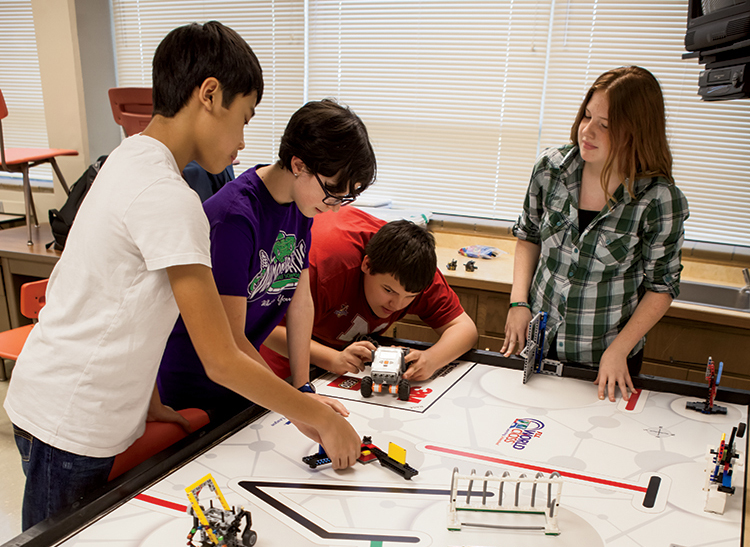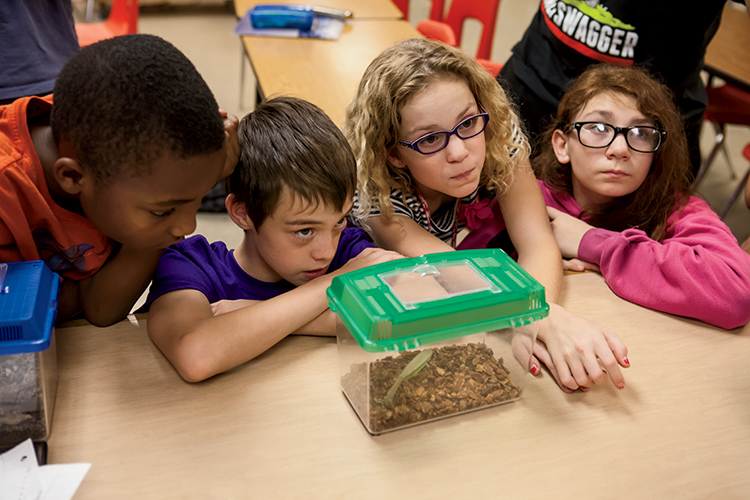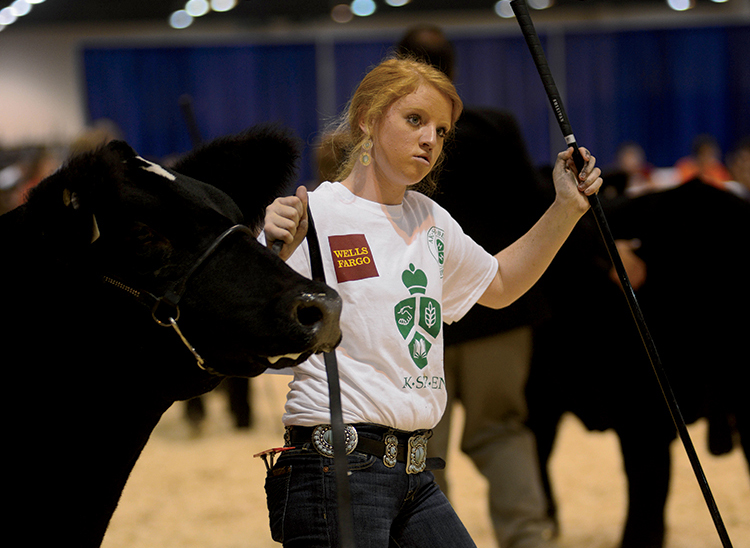Home > Nebraska > Nebraska Ag Education > Nebraska 4-H is Making the Best Better
Nebraska 4-H is Making the Best Better

Students learn a great deal throughout their school years, ranging from math and science to history and art. But life skills such as citizenship and leadership are difficult to fit into school curriculums. Fortunately, that’s where the Nebraska 4-H program comes in.
More than 140,000 young people between the ages of 8 and 18 are involved in 4-H across Nebraska. The program’s mission is to help youth reach their full potential and become responsible, caring adults using a learn-by-doing approach. A program called Clover Kids reaches out to younger children ages 5 to 7. All 93 Nebraska counties have a 4-H presence, and the program reaches approximately one-third of the state’s youth.
“4-H started more than 100 years ago in the days of Corn Clubs, when we taught young kids and adults about agriculture,” says Kathleen Lodl, associate dean of University of Nebraska-Lincoln Extension. “Today, it allows young people to explore subject areas they might not otherwise be exposed to, with lots of hands-on experiments and the opportunity to try new things not necessarily provided in a school setting.”

4-H In Urban Nebraska
Youth across Nebraska can be involved in 4-H through traditional clubs, camps, after-school groups, school enrichment programs and special events. While 4-H has roots in agriculture, it reaches far beyond that industry today. Members can explore project areas including robotics, computers, healthy eating, fitness, meal preparation, rocketry, first aid, clothing, woodworking, animals, gardening, public speaking, theater and many others.
“In Nebraska, we do strategic planning every five years and ask people what things they believe we should be doing to promote youth development,” Lodl says. “The five areas we are currently focusing on include Science, Career Development/College Readiness, Healthy Lifestyles, Citizenship and Leadership, and Agriculture Literacy, or helping people understand where their food comes from. We have programs statewide focusing on these areas.”
4-H has experienced a great deal of success reaching kids in urban settings through afterschool programs such as the one at Dawes Middle School in Lincoln. Their 4-H program offers robotics, photography and filmmaking, and cooking clubs.
“I have seen 4-H have profound impacts on students here at Dawes, who are now able to self-identify specific interest areas and expand their learning about careers in those areas, and develop socially and gain confidence because they are in settings conducive to their self-expression,” says Karen Bell- Dancy, who is a school community coordinator at Dawes Middle School and directs its Community Learning Center for Expanded Learning Programs. “Our students had the opportunity to meet the first lady of Nebraska and national 4-H leaders and hear plans to expand programming. The true reward is they were able to see role models and examples of how 4-H prepares you for future careers including entrepreneurship, educators, politicians and civic engagement.”

4-H In Rural Nebraska
4-H continues to thrive in rural Nebraska and has a large presence at county fairs.
“Exhibiting projects at fairs is one way youth can celebrate work they’ve been doing all year, whether it’s baking, sewing, engineering or any hands-on activity kids enjoy,” Lodl says.
Cynthia Gill is an extension educator for youth development in Cheyenne and Kimball-Banner counties in western Nebraska, and says 4-H participation has “exploded” in her region. In January 2015, eight teams of 4-H’ers from Gill’s region competed in a worldwide robotics competition based on teamwork called the FIRST LEGO League in Sidney, Neb.
“Each year, a robotics challenge is issued and teams build robots to complete the challenges,” Gill explains. “Teams also prepare a presentation about a solution to a problem related to the challenge. Teams and coaches help one another.”
Gill joined 4-H in the third grade and has been involved ever since. It became a family tradition – both her daughters later joined 4-H, too.
“Today, our daughters are students at the University of Nebraska-Lincoln in areas of study that were sparked by their 4-H participation,” Gill says. “4-H instills confidence. For many, 4-H is just one of their activities. But for some, 4-H is the activity. They may not make the sports team, but they excel with their livestock project.”
Gill is inspired when a student learns something new and exciting.
“The light fires up in their eyes,” she says. “Their enthusiasm for their discovery is the fuel that keeps me going.”




That is awesome! Such a deserving family!
Nice Article, Proud of all of you.
This is where we got out start in to the
Horse show business. It was 1991 and Dr. Vance
Had just graduated from Vet School. She is an
Awesome lady and a spectacular MOM…